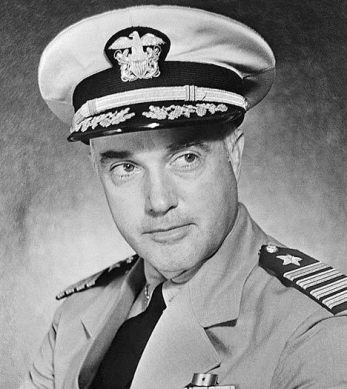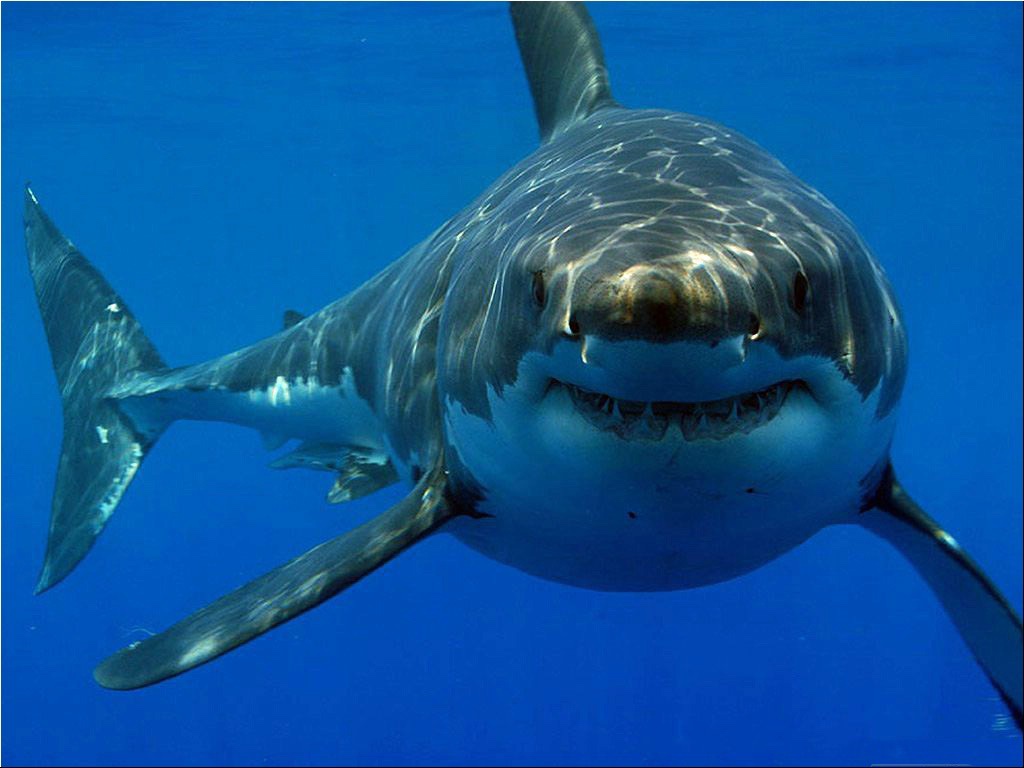The Portland class heavy cruiser USS Indianapolis set out on a secret mission on July 16, 1945, under the command of Captain Charles Butler McVay III. She was delivering “Little Boy” to the Pacific island of Tinian, the atomic bomb which would later be dropped on Hiroshima.
Indianapolis made her delivery on July 26, arriving at Guam two days later and then heading for Leyte to take part in the planned invasion of Japan. She was expected to arrive on the 31st.

The Japanese submarine I-58, Captain Mochitsura Hashimoto commanding, fired a spread of six torpedoes at the cruiser, two striking Indianapolis’ starboard bow at fourteen minutes past midnight on Monday, July 30. The damage was massive. Within 12 minutes, the 584-foot, 9,950-ton vessel had rolled over, gone straight up by the stern, and sunk beneath the waves.

About 300 of Indianapolis’ 1,196-member crew were killed outright, leaving nearly 900 treading water. Many had no life jackets. There had been no time, and there were few life boats.

The ordeal faced by the survivors, is beyond description. Alone and stranded in open ocean, these guys treaded water for four days, hoping and praying for the rescue that did not come.
Shark attacks began on the first day, and never let up. Kapok-filled life vests became waterlogged and sank after 48 hours, becoming worse than useless. Exhaustion, hypothermia, and severe sunburn, each took their toll as the hours turned to days.
Locked in the grip of some dreadful hallucination, men went insane and began to attack shipmates. Others found the thirst so unbearable they succumbed to temptation, drinking seawater and setting off the biological chain reaction which would kill them in only hours. Some simply swam away, following some spectral vision only he could see.
Through it all, random individuals would suddenly rise up screaming from the ocean only to disappear forever as the apex predator of these waters claimed another victim.
Navy Command had not the slightest idea of what happened to Indianapolis, nor why she didn’t show up on the 31st. It was a random patrol aircraft passing the area that Thursday afternoon, that finally discovered men floating in open ocean. The last Indianapolis survivor was plucked from the ocean Friday afternoon, well past half-dead after nearly five days in the water.
Of the 900 or so who survived the sinking of USS Indianapolis, only 316 remained alive at the end of the ordeal.

The Navy bureaucracy had committed multiple errors, from denying McVay’s requested escort to informing him that his route was safe, even when the surface operations officer knew there were at least two Japanese submarines, operating in the area.
No captain in the history of the United States Navy was subjected to court-martial for losing a ship sunk by act of war. The United States Navy lost over 350 ships to combat operations during WW2. It didn’t matter. On this occasion, someone was going to pay.
A hastily convened court of inquiry was held in Guam on August 13, leading to McVay’s court-martial. There was evidence that the Navy itself had put the ship in harm’s way, but no matter. When prosecutors flew the I-58 commander in to testify, Hashimoto swore that zigzagging would have made no difference. The Japanese Commander himself became part of a later effort to exonerate McVay, but to no avail. Charles Butler McVay III was convicted of “hazarding his ship by failing to zigzag“, a long and honorable career, ruined.

McVay had wide support among Indianapolis’ survivors, but opinion was by no means unanimous. Birthdays would come and go along with anniversaries and there was always some piece of hate mail, blaming him for the death of a loved one. One Christmas missive read “Merry Christmas! Our family’s holiday would be a lot merrier if you hadn’t killed my son”.
McVay began to doubt himself. By 1968 he must have felt the weight of Indianapolis’ dead, like a great weight of grief on his shoulders.
On November 6, 1968, Charles Butler McVay III sat down on the front porch if his Litchfield Connecticut home, took out his Navy revolver, and killed himself. He was cremated, his ashes scattered at sea.
It would take more than 20 years for the evidence which exonerated him, to be declassified.
Afterward:
Hunter Alan Scott was eleven and living in Pensacola when he saw the movie “Jaws”, in 1996. The boy was fascinated by the movie’s brief mention of the Indianapolis’ shark attacks. The following year, Scott created his 8th grade “National History Day” project on the USS Indianapolis sinking. The lad interviewed nearly 150 survivors and reviewed some 800 documents and the more he read, the more he became convinced that Captain McVay was innocent of the charges for which he’d been convicted.
Scott’s National History Day project went all the way to the state finals, only to be rejected because he’d used the wrong type of notebook.

Hunter Scott couldn’t let the matter end there. He began to attend Indianapolis survivors’ reunions, at their invitation, and helped to gain a commitment in 1997 from then-Representative Joe Scarborough. He would introduce a bill in Congress to exonerate McVay, the following year.
Senator Bob Smith of NH joined Scarborough in a joint resolution of Congress. Hunter Scott and several Indianapolis survivors were invited to testify before Senator John Warner and the Senate Armed Services committee on September 14, 1999.
Holding a dog tag in his hand, Hunter Alan Scott testified that “This is Captain McVay’s dog tag from when he was a cadet at the Naval Academy. As you can see, it has his thumbprint on the back. I carry this as a reminder of my mission in the memory of a man who ended his own life in 1968. I carry this dog tag to remind me that only in the United States can one person make a difference no matter what the age. I carry this dog tag to remind me of the privilege and responsibility that I have to carry forward the torch of honor passed to me by the men of the USS Indianapolis”.
The United States Congress passed a resolution in 2000, signed into law by President Bill Clinton on October 30, exonerating Charles Butler McVay III of the charges which had led to his court martial, humiliation and suicide.

The record cannot not be expunged. Congress has rules against so much as considering bills altering military records, and there is no means by which to reverse a court-martial. It’s never been done. Even so, Captain McVay had been exonerated, something the Indianapolis survivors had tried to accomplish without success. Until the intervention of a 12-year-old boy.
Who ever said one person can’t make a difference?



This is an extraordinary story that just keeps unfolding as you tell it… That the Indianapolis delivered “Little Boy” would have been significant enough. But then for it to be destroyed by an enemy submarine (“Within 12 minutes, the 584-foot, 9,950-ton vessel had rolled over, gone straight up by the stern, and sunk beneath the waves…”) with hundreds of crew members killed and even more hundreds floating for days in the Pacific sun to gradually perish via madness, via shark attack, via drinking sea water is astounding! And then to have the court martial leading eventually to suicide followed years later by Hunter Alan Scott’s involvement in McVay’s exoneration… wow. So much human history packed into one blog post!!! Thank you for writing and sharing it.
LikeLike
Thanks for revisiting the story. That even the military is susceptible to utilitarian cowardice and scapegoating ought to be a sober reminder that letting Congress grab power is the height of stupidity. McVay could have improved the system by taking a rubber-stamp member of the court-martial with him.
LikeLiked by 2 people
Reblogged this on Dave Loves History.
LikeLiked by 1 person
Did you happen to read the recent book about this called “Indianapolis”? I’m sure you probably must have – it was very well done and I was happy to see them include Hunter Scott and his quest to get McVay exonerated.
LikeLiked by 2 people
Can I be honest MB? Yeah, I’m sure I can. It’s just you and me. It’s on my nightstand. One of my dogs FRIGGING ATE IT!
LikeLiked by 2 people
NOOOOOO!!!! Hahahaha oh no!
LikeLiked by 2 people
I do love those little monsters but sometimes….
LikeLiked by 2 people
I hear ya. I had a puzzle (completed) sitting on the dining room table and normally my cats leave the completed ones alone. But boy did she have a field day with this one. I came downstairs the next morning to puzzle pieces everywhere…
LikeLiked by 1 person
Would you be mad at me if I told you I laughed like hell at that one? Maybe it’s just Pusscake’s revenge for domesticating the little shit. She still thinks she’s Bagheera the panther.
LikeLiked by 2 people
LOL nope not mad at all. I laughed pretty good myself once I finally managed to get all the pieces gathered up and back in the box. Of course there’s no way I got all of them. I’m sure I’ll be finding stray puzzle pieces around here until kingdom come. I know it was our girl cat too, because our boy cat is too fat to get up on the table hahaha.
LikeLiked by 2 people
😂
LikeLiked by 2 people